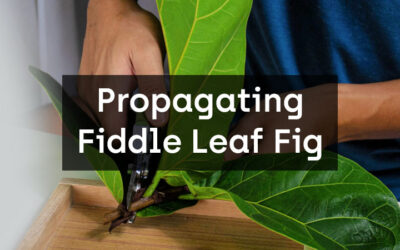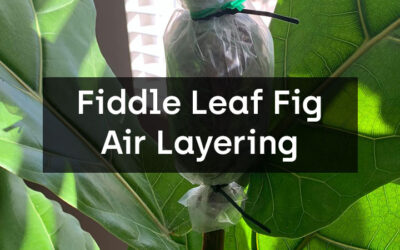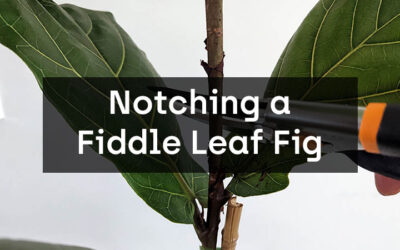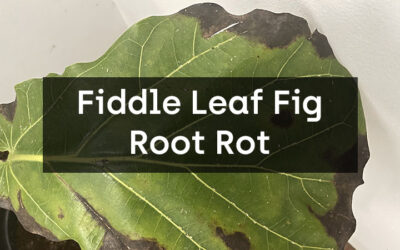Table of Contents
- Understanding the water needs of Fiddle Leaf Figs
-
- Natural habitat and water requirements
- The importance of proper watering for Fiddle Leaf Figs
-
- Factors affecting watering needs
-
- Light intensity and duration
- Temperature and humidity
- Soil type and drainage
- Pot size and root system
-
- Best practices for watering Fiddle Leaf Figs
-
- How often to water Fiddle Leaf Figs
- How much water to give
- Watering techniques
- The use of water meters and moisture probes
-
- Common mistakes to avoid when watering Fiddle Leaf Figs
-
- Overwatering
- Underwatering
- Watering with cold or hot water
- Watering with tap water
-
- Troubleshooting watering issues
-
- Signs of overwatering
- Signs of underwatering
- How to save an overwatered Fiddle Leaf Fig
- How to revive an underwatered Fiddle Leaf Fig
-
- Conclusion
- FAQs
1. Understanding the water needs of Fiddle Leaf Figs
Natural habitat and water requirements
Fiddle Leaf Figs are native to the tropical regions of West Africa, where they grow in humid, warm environments with consistent rainfall. In their natural habitat, Fiddle Leaf Figs receive water regularly and do not experience long periods of drought. Therefore, to thrive in a home environment, Fiddle Leaf Figs require consistent watering that mimics their natural habitat.
The importance of proper watering for Fiddle Leaf Figs
Proper watering is crucial for the health and vitality of Fiddle Leaf Figs. Water is essential for the plant’s growth, photosynthesis, and nutrient uptake. Inadequate or inconsistent watering can lead to a variety of issues, including leaf drop, brown spots, and root rot.
2. Factors affecting watering needs
Light intensity and duration
The amount and duration of light a Fiddle Leaf Fig receives can affect its watering needs. When a Fiddle Leaf Fig is exposed to intense sunlight, it transpires more water, and the soil dries out faster, requiring more frequent watering. In contrast, when a Fiddle Leaf Fig is placed in low light conditions, it requires less water since it transpires less.
Temperature and humidity
Temperature and humidity levels can also affect a Fiddle Leaf Fig’s watering needs. In warmer temperatures, Fiddle Leaf Figs require more water to compensate for the increased transpiration rate. Similarly, in low humidity conditions, Fiddle Leaf Figs may require more frequent watering to prevent the soil from drying out.
Soil type and drainage
The type of soil and its drainage properties can significantly impact the watering needs of a Fiddle Leaf Fig. Well-draining soil is crucial for Fiddle Leaf Figs since they are susceptible to root rot when exposed to excess water. Soil that retains water for too long can cause the roots to suffocate, leading to root rot.
Pot size and root system
The size of the pot and the root system of the Fiddle Leaf Fig also play a role in its watering needs. A larger pot size means that there is more soil to hold moisture, and the root system may take longer to dry out. Conversely, a smaller pot may dry out faster and require more frequent watering.

3. Best practices for watering Fiddle Leaf Figs
How often to water Fiddle Leaf Figs
One of the most common questions about watering Fiddle Leaf Figs is how often to water them. The frequency of watering depends on several factors, including the plant’s environment, pot size, and soil type. As a general rule, Fiddle Leaf Figs should be watered when the top 2-3 inches of soil are dry to the touch.
How much water to give
When watering a Fiddle Leaf Fig, it’s essential to give enough water to thoroughly saturate the soil. It’s crucial to ensure that the water penetrates the root ball and doesn’t just sit on the surface. Watering until water drains out of the bottom of the pot is a good indicator that the soil is saturated.
Watering techniques
There are several ways to water a Fiddle Leaf Fig, including bottom watering, top watering, and misting. Bottom watering involves placing the pot in a saucer of water and allowing the soil to absorb the water from the bottom up. Top watering involves pouring water directly onto the soil. Misting involves spraying the leaves with water.
The use of water meters and moisture probes
Water meters and moisture probes are useful tools to help determine when a Fiddle Leaf Fig needs watering. These tools measure the moisture level in the soil and indicate when it’s time to water.
4. Common mistakes to avoid when watering Fiddle Leaf Figs
Overwatering
Overwatering is one of the most common mistakes when it comes to caring for a Fiddle Leaf Fig. Overwatering can lead to root rot, which can be fatal to the plant. Signs of overwatering include yellowing leaves, mushy stems, and a foul smell emanating from the soil.
Underwatering
Underwatering can also be detrimental to the health of a Fiddle Leaf Fig. Signs of underwatering include dry, crispy leaves, and a wilting appearance. Underwatering can cause the plant to become stressed and more susceptible to disease.
Watering with cold or hot water
Watering a Fiddle Leaf Fig with cold or hot water can shock the plant and cause damage to the roots. It’s essential to use room temperature water when watering a Fiddle Leaf Fig.
Watering with tap water
Tap water can contain minerals and chemicals that can be harmful to a Fiddle Leaf Fig. It’s best to use filtered or distilled water when watering a Fiddle Leaf Fig.
5. Troubleshooting watering issues
Signs of overwatering
If a Fiddle Leaf Fig has been overwatered, it may display yellowing leaves, mushy stems, and a foul odor emanating from the soil. To correct overwatering, it’s essential to reduce watering frequency and improve soil drainage. It’s also crucial to remove any affected leaves or stems to prevent further damage.
Signs of underwatering
If a Fiddle Leaf Fig is underwatered, it may appear wilted, with dry, crispy leaves. To remedy underwatering, it’s essential to increase watering frequency and ensure that the soil is thoroughly saturated during watering.
How to save an overwatered Fiddle Leaf Fig
To save an overwatered Fiddle Leaf Fig, it’s essential to reduce watering frequency and improve soil drainage. It’s also crucial to remove any affected leaves or stems to prevent further damage. If the roots appear to be severely damaged, repotting the plant in fresh, well-draining soil may be necessary.
How to revive an underwatered Fiddle Leaf Fig
To revive an underwatered Fiddle Leaf Fig, it’s essential to increase watering frequency and ensure that the soil is thoroughly saturated during watering. It may also be beneficial to mist the leaves regularly to increase humidity levels.
6. Conclusion
Watering a Fiddle Leaf Fig can be a bit of a challenge, but with the right techniques and knowledge, it can be an easy and enjoyable part of caring for this beautiful plant. By understanding the plant’s needs and avoiding common mistakes, you can keep your Fiddle Leaf Fig healthy and thriving for years to come.
7. FAQs
1. How often should I water my Fiddle Leaf Fig?
2. Can I use tap water to water my Fiddle Leaf Fig?
3. What should I do if my Fiddle Leaf Fig is overwatered?
4. What should I do if my Fiddle Leaf Fig is underwatered?
5. Can I mist my Fiddle Leaf Fig to increase humidity levels?
Learn how to Repot a Fiddle Leaf Fig
Propagating Fiddle Leaf Fig: Step-by-Step Guide
Fiddle leaf figs are popular houseplants due to their large, vibrant green leaves and striking appearance. These plants can grow up to six feet tall, and they require specific care to keep them healthy and thriving. One way to propagate a fiddle leaf fig is by taking...








0 Comments